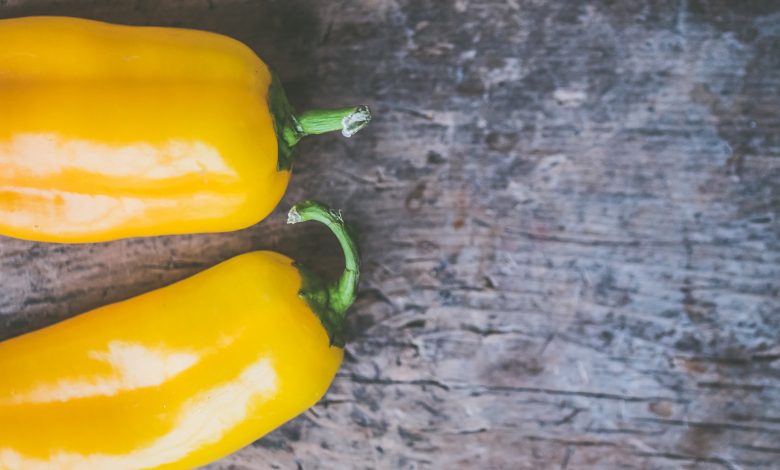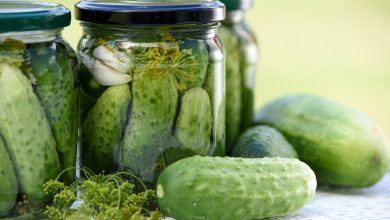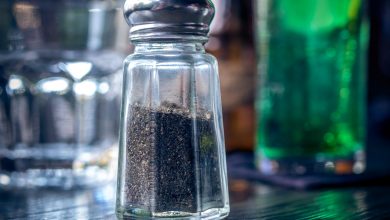When to Pick Banana Peppers

Banana peppers go by the botanical name of Capsicum annum and are among the most preferred pepper varieties. The name banana pepper comes from the tapered, slightly curved shape and yellow color of the pepper, which has features similar to that of a banana. Banana peppers may have a mild sweet or hot, prickly taste and also come in a variety of colors, such as red, orange, light green, and yellow. Legend has it that Christopher Columbus was the one who introduced these peppers to Europeans, and ever since then, the vegetable has become an indispensable ingredient in European cuisine.
These peppers commonly grow and thrive during the hottest time of summer. You don’t need to have the wisdom of the sages to tell whether they’re ripe or not. You’ll find out everything you need to know about the banana pepper as you keep reading.
Types of Banana Pepper
There are many types of banana pepper, but these are the most common varieties:
Sweet Banana Pepper
The sweet banana usually has a pale yellow appearance during the first few weeks of planting that later changes to a deep yellow or orange color upon maturity. This banana pepper gets its name from its mildly sweet taste, which makes it a special favorite ingredient in most dishes. When fried, the pepper becomes crisp and crunchy, which adds a delicious flavor and taste to sandwiches and salads.
Banana Bill Hybrid Pepper
This pepper is sweet to the taste and can appear yellowish or reddish when mature. The length of the banana bill hybrid pepper ranges from seven to eight inches. You can identify this pepper from its thick texture. When harvested while it’s still slightly yellow, the sweetness is mild, but its real sweetness manifests upon full maturity. This species of pepper has a high resistance to disease and is very prolific. The best time to plant a banana bill hybrid pepper is during spring.
Hot Banana Pepper
Known for its mild hot taste, this pepper finds its use in many hot and spicy Spanish dishes. Maturity usually comes around 65 to 85 days, with its total length between six to eight inches.
Inferno Hot Banana Hybrid Pepper
The inferno is another type of banana pepper. It mostly has a medium green color, which changes into red when it’s ripe and has a narrow width that can reach lengths of six inches or more. It has a mildly hot taste making it an excellent substitute for habanero pepper in dishes. The best time to plant this pepper is after June 15th; anything later than that may result in a reduced yield.

Caring for Banana Peppers
Banana pepper seeds require high sod temperatures for germination. They’ll fare better if they’re started indoors during the hottest days. Consider allowing a lead time of 40 to 60 days ahead of transplanting. Go for a location with a 70 to 75 degrees Fahrenheit temperature. At night, the temperature should be no lower than 60 degrees Fahrenheit. There are options to cultivate banana peppers from ready-made nurseries or seeds. However, you’ll want to make sure that the soil for cultivation is rich in magnesium and that it’s a loamy soil type. Don’t grow hot banana peppers and sweet ones together. That way, you can avoid cross-pollination. The soil should be moist yet devoid of sogginess.
When to Harvest Banana Peppers
The average time it takes for banana peppers to fully mature is within 70 to 75 days after germination. The climate condition plays a critical role in determining the speed of growth and time of maturity. Also, cold weather will affect the growth of these peppers, as they thrive and mature under warm conditions. Other factors that may cause stunted or slow growth are soil infertility and inadequate watering. To know the best time to harvest, you should begin counting from the first day of germination. However, it would help if you understood that some peppers may mature quickly and appear bigger than others on the same stem. So don’t pick a pepper solely because it has reached the required date for maturity, but consider its size too and allow more time for smaller peppers.
Hot Banana Peppers at Maturity
When mature, hot banana peppers have a total length of about six inches and a width of about one and half inch. When the peppers change into a yellow color, try breaking them off the stem, if they snap easily, that’s a sure sign that you can go ahead and harvest. The hot banana pepper has a mild peppery taste while still yellow and becomes more peppery as it begins to turn red. You can dry the peppers outdoor after harvest and wait till they turn red before using them.
Sweet Banana Peppers at Maturity
The sweet banana pepper variety turns out smaller than its hot sibling. The average length is four to six inches, and its average width is about one and a half inches. The best time for picking sweet banana peppers is when they grow to their maximum size and turn completely yellow. They may not break off the stem with the same ease as the hot varieties when you pull them if you leave them on the stem for a bit longer until they turn red, and their sweet taste intensifies. You can eat the sweet banana pepper raw or use them in salads.

How to Harvest Banana Peppers
Only harvest your banana pepper after the evaporation of the morning dew, as you could unknowingly spread pathogens when handling wet plants. To harvest hot banana peppers, hold the pepper firmly and pull sharply to break it off the stem. You’ll want to be careful when you pull so you don’t damage the plant or accidentally yank off unripe peppers. You can support the stem with one hand while you pluck the pepper with the other.
While harvesting sweet banana peppers, use a pair of shears instead of breaking the vegetable off the plant. Start by disinfecting the shears’ blades by rubbing alcohol on it, and then cut with the shears, leaving a short stem on the pepper.
When harvesting banana peppers, separate bruised or rotting peppers from the others, as they spoil faster and will contaminate the others.
Like all vegetables, the best time to savor the deliciousness and flavor of banana pepper is when it’s fresh. You can prevent peppers from rotting by storing them in the refrigerator. Storing in the fridge should keep them fresh and tasty for about two weeks, but if you’re looking for a more long-term storage mode, you may want to consider the following options.
How to Store Banana Peppers
One method of storing banana pepper is through pickling. You can pickle both types of banana pepper, but the hot variety tastes much better after pickling. Compared to other species, pickling banana pepper doesn’t alter its color, so you can use it in dishes where the color of a vegetable is required to make food appealing to the sight.
Freezing Method
If your pepper plants produce more than you anticipated and you’re left with a handful of peppers that you don’t want to waste, you could store them in a freezer for preservation. Use a knife to cut the peppers into small pieces and put them in a freezer bag before tossing it into the freezer. You can leave them there for six months and still be rest assured they’ll taste excellent when you use them later.
Drying Method
You can dry the peppers in the sun to preserve them. Drying takes away the moisture, and bacteria that cause vegetables to go bad don’t thrive in dry conditions. However, drying may cause the pepper to lose its freshness, which may alter its taste slightly.

What to Use Banana Peppers For
Now that you’ve harvested your banana peppers, you might have some dishes you want to use them for, but here are some of the best ways to enjoy this tasty and delicious vegetable.
As a Topping for Pizza
The combination of banana peppers with other conventional pizza toppings will set your taste buds alight. You can mix banana peppers with pepperoni and cured meats for a perfect flavorful topping. It also melds well with other vegetables and adds a touch of spiciness to pizza.
In Salads
Using raw or pickled banana pepper in salads adds a mild peppery taste to the mixture. The tangy taste of pickled banana pepper provides a distinct flavor, especially in salads with creamy dressings.
In Sandwiches
The slight acidity in pickled banana pepper, when combined with turkeys, cold cuts, and salmon, gives a divine taste. You can use pickled banana peppers as a substitute for cucumber pickles on your burger.
In Tacos
Although pickled or fresh jalapeños peppers are the commonly used vegetable in tacos, banana peppers are a great substitute. If you’re looking to enjoy your tacos without the peppery taste of the jalapeños, you can opt for pickled banana peppers to lend a crisp, tasty flavor to it.
Banana peppers are vegetables grown for the unique taste and flavor they add to dishes, dressings, and snacks. Growing, harvesting, and preserving banana peppers require some basic knowledge. Once you know everything you need to grow banana peppers, you’ll always have an indispensable spice that can add great taste to your meal, plus all the amazing health benefits it provides.



